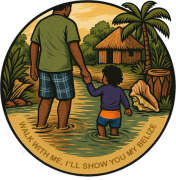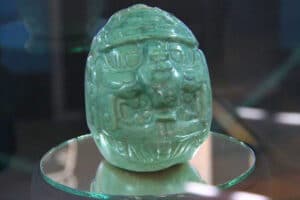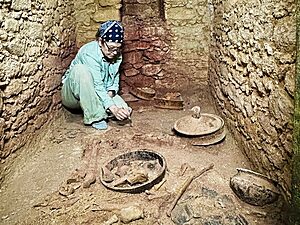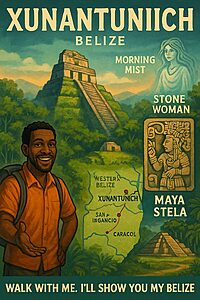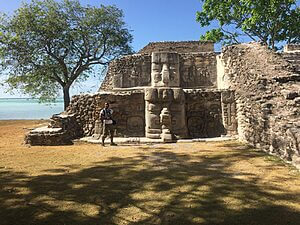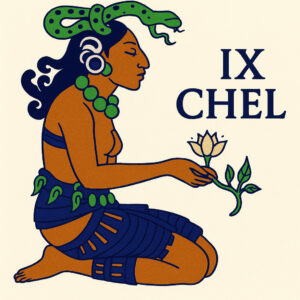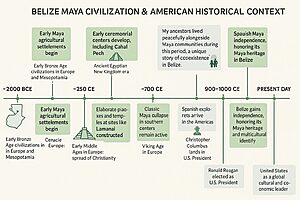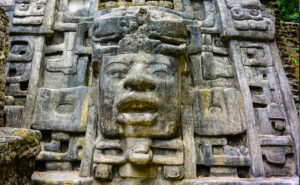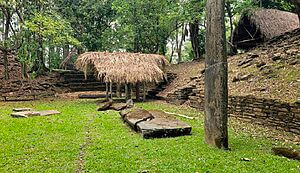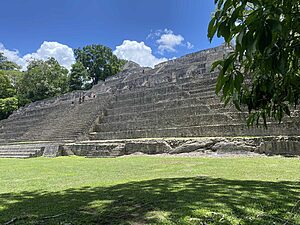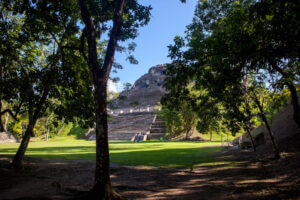Cahal Pech Maya Ruins – Belize’s Hilltop Gateway to the Past
🏛️ The Place of Ticks (But Don’t Worry)
Cahal Pech means “Place of Ticks” in Yucatec Maya, but don’t let the name scare you—it was likely a reference to the area’s ancient fauna, not your modern-day tour experience. Located above San Ignacio, the site is surrounded by forest, offering a quiet, shaded visit perfect for early mornings.
Quick Facts
- Earliest occupation: Around 1200 BCE (Preclassic Period)
- Nearby town: San Ignacio (5 minutes)
- Public transport access: Yes
- Best for kids: Yes
- Guided tour recommended: Yes, for historical context
👑 History & Rulers
Cahal Pech is one of the oldest known Maya sites in Belize. Archaeological evidence shows it was continuously inhabited for over 2,000 years. It likely served as a royal acropolis for an elite ruling family, though specific rulers remain unnamed.
Its strategic hilltop location suggests it had both defensive and symbolic purposes. Over time, Cahal Pech influenced nearby sites and may have even helped shape early Maya ceremonial architecture in the region.
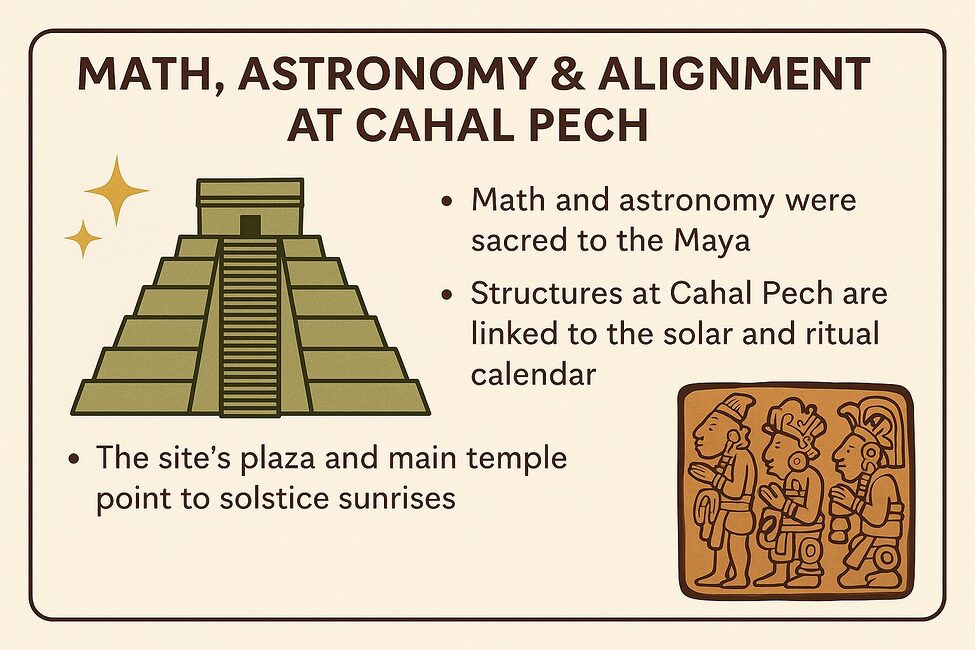
🪶 Featured Ritual Pottery: The Peccary-Maize Vessel
One of the most iconic artifacts unearthed at Cahal Pech is a ceramic vessel depicting a peccary and the Maize God — a sacred pairing in Maya mythology. This rare find offers a glimpse into the site’s spiritual life, where agriculture, animals, and divine cycles were deeply intertwined. Vessels like this were likely used in ceremonial offerings tied to seasonal rituals or elite feasting events.
🔢 Math, Astronomy, and Alignment
Although Cahal Pech is primarily valued for its age and architecture, some structures show early experimentation with cosmic alignment. Buildings are oriented to cardinal directions, and small temples face east to catch the sunrise—a feature tied to solar reverence in later Maya sites.
Artifacts found at the site include early calendrical glyphs and ceremonial items that suggest the beginnings of what would become a complex mathematical and astronomical tradition in Maya society.
📆 Calendar and Ceremonial Timing
Though smaller in scale, Cahal Pech followed the same sacred calendar system as larger Maya cities. Structures in the site’s central plaza appear aligned to sunrise positions during key solar events. Ceremonial altars discovered here suggest observances timed with agricultural cycles—especially the planting and harvest seasons. Offerings of maize and cacao likely honored the Maize God and earth spirits during these calendrical rituals. For a site overlooking the Belize River Valley, Cahal Pech played a vital role in sustaining timekeeping traditions at the local elite level.
🏗️ Architecture and Urban Layout
Unlike many sprawling lowland cities, Cahal Pech is compact, with over 30 structures clustered around courtyards. Notable features include:
- Multi-room palaces with vaulted ceilings
- Small temples facing east and west
- Ball court—a hallmark of Maya ceremonial life
Architecture with a Purpose: Royal and Administrative Spaces
Structures A1 and A3 weren’t just ceremonial—they may have served as royal residences or administrative hubs. From these vantage points, rulers could oversee rituals in the plaza while maintaining control of elite gatherings, feasts, and political affairs.
The design encourages exploration. Walking through its narrow doorways and corridors offers a sense of what life was like in an elite Maya residence.
🕳️ Sacred Caves and Regional Ritual Practices
🔗 Relationship to Other Maya Sites
Cahal Pech likely interacted with:
- Xunantunich: Later became dominant nearby site
- Caracol: Possible trade connections
- Tikal: Distant cultural and ceremonial parallels
Because of its early age, Cahal Pech gives archaeologists insight into how Maya city-states developed political and architectural traditions.
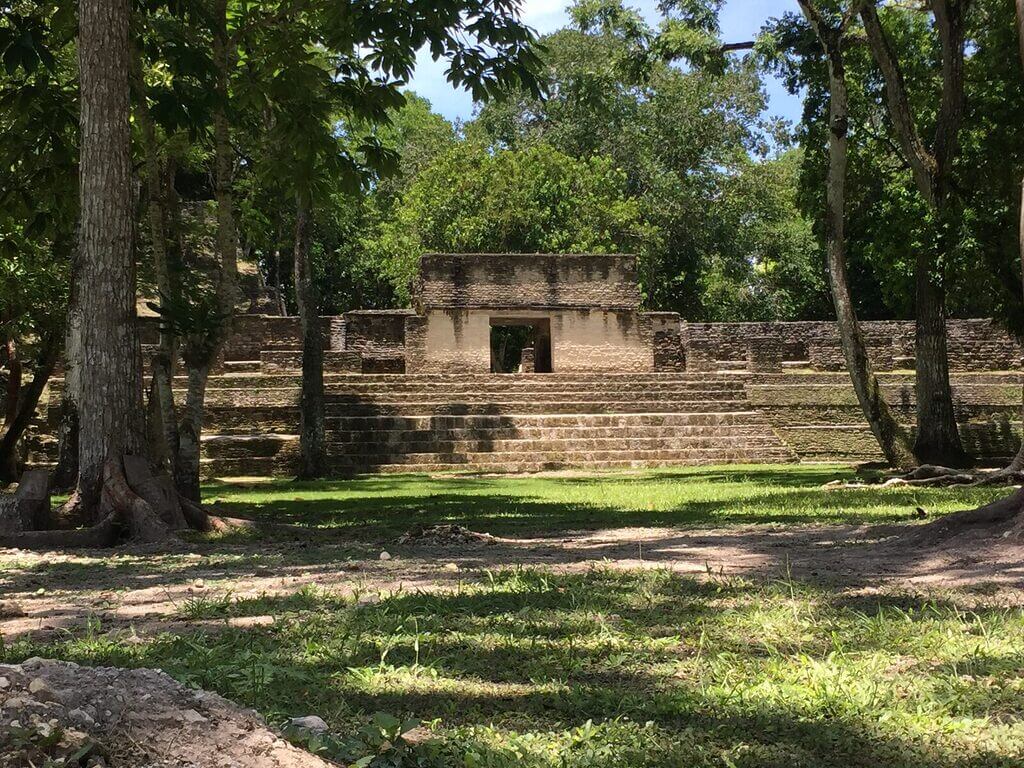
🧭 Tour Experience Today
Cahal Pech is often my go-to for travelers staying in San Ignacio. It’s just minutes away and makes for a quiet, reflective visit. The trails are short but immersive, and I often take guests early in the day to enjoy the birdsong and cooler temperatures.
Because of its size and shade, it’s ideal for families with young kids or guests who want a lower-impact introduction to Maya ruins. The small museum helps visitors understand the site’s age and significance.
📌 Facilities & Visitor Tips
- Hours: 8:00 AM – 5:00 PM daily
- Location: Just above San Ignacio Town (easy access)
- Restrooms: At visitor center
- Museum: Small but informative with ancient pottery and tools
- Shaded Areas: Good tree cover makes it comfortable year-round
- Footwear: Sneakers or light hikers ideal
- Accessibility: Compact site with some uneven steps
- Food Nearby: Restaurants in San Ignacio are minutes away
Pro Tip from Alvin: Go early to hear the howlers and catch mist in the trees—plus it’s cooler and less crowded.
🧍🏽♂️ Personal Tour Experience
Note from Alvin: The first time I visited Cahal Pech, I didn’t think much of it. It felt small compared to other sites. But after becoming a guide and learning how ancient it is, I saw it with new eyes. Today, I love pointing out agoutis and toucans in the trees while guests explore the temples. There’s one part of the trail that always makes me stop and imagine what it was like when this place was filled with music, rituals, and laughter.
🧭 Today’s Relevance
Cahal Pech is a favorite for:
- Guests looking for an easy half-day ruin visit
- Families with kids
- Travelers interested in early Maya history
It’s less crowded than larger sites and has an on-site museum with artifacts. The cool forest canopy makes it ideal year-round.
Nearby, San Ignacio offers additional attractions, from the market to local eateries and cultural experiences like the San Antonio Women’s Cooperative.
🎓 Archaeology and Local Youth Engagement
🙋♂️ Who Should Visit Cahal Pech?
- History buffs and archaeology students
- Nature lovers and bird watchers
- Visitors staying in San Ignacio
- Families with children
Walk With Me. I’ll Show You My Belize.
📍 Map
🗺️ See this on the map
Open the Interactive Map »
📚 Sources & Further Reading
- Institute of Archaeology Belize – NICH Belize
- Cahal Pech Archaeological Project, Dr. Jaime Awe, University of New Hampshire
- Awe, J.J., “The Rise of Maya Civilization: Insights from Cahal Pech” (Belizean Studies Journal)
- Maya Cosmos: Three Thousand Years on the Shaman’s Path, David Freidel, Linda Schele, and Joy Parker
- An Illustrated Dictionary of the Gods and Symbols of Ancient Mexico and the Maya, Mary Miller & Karl Taube
- National Geographic – Maya Civilization
- Sharer, Robert J., The Ancient Maya, 6th Edition
